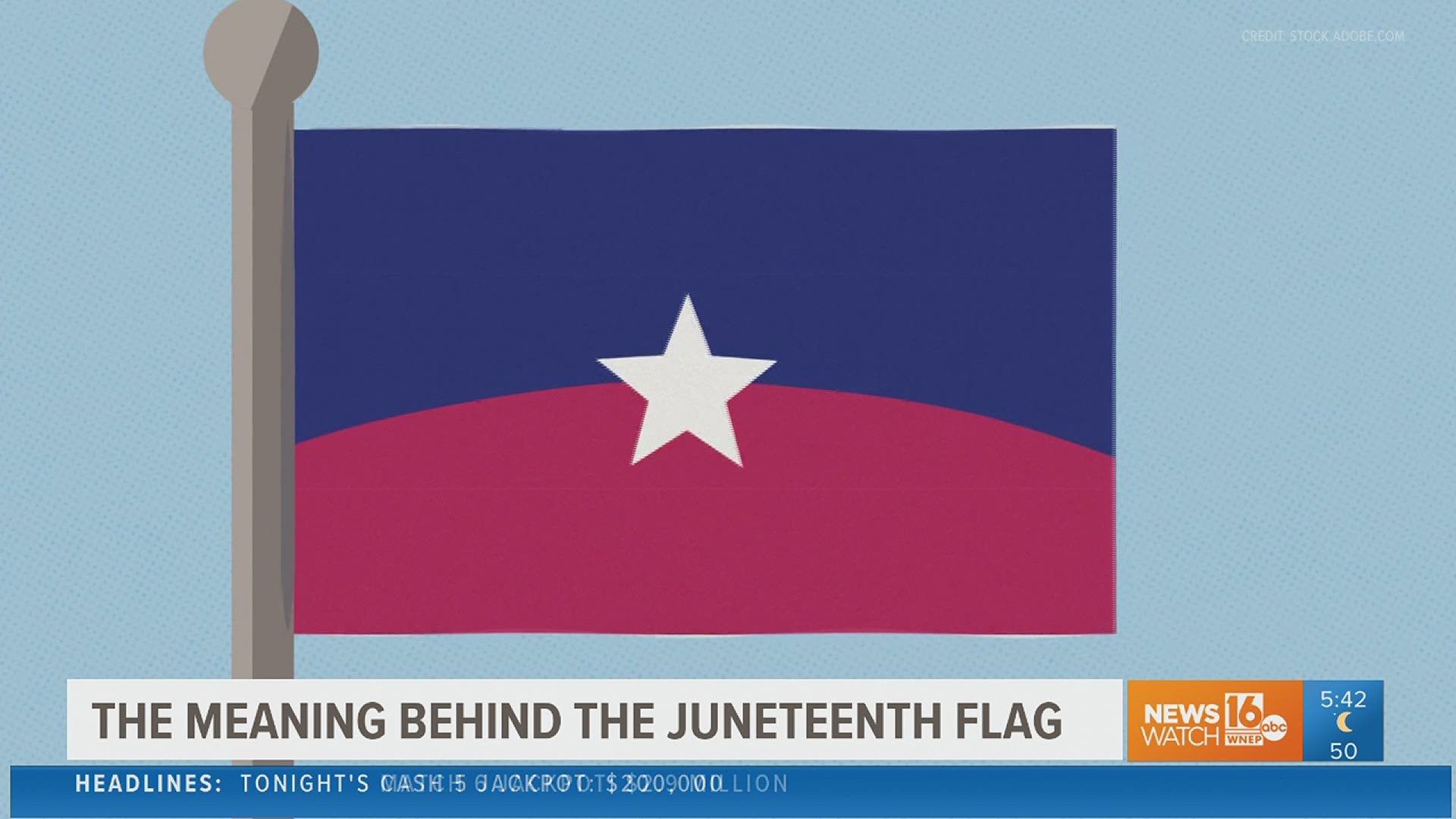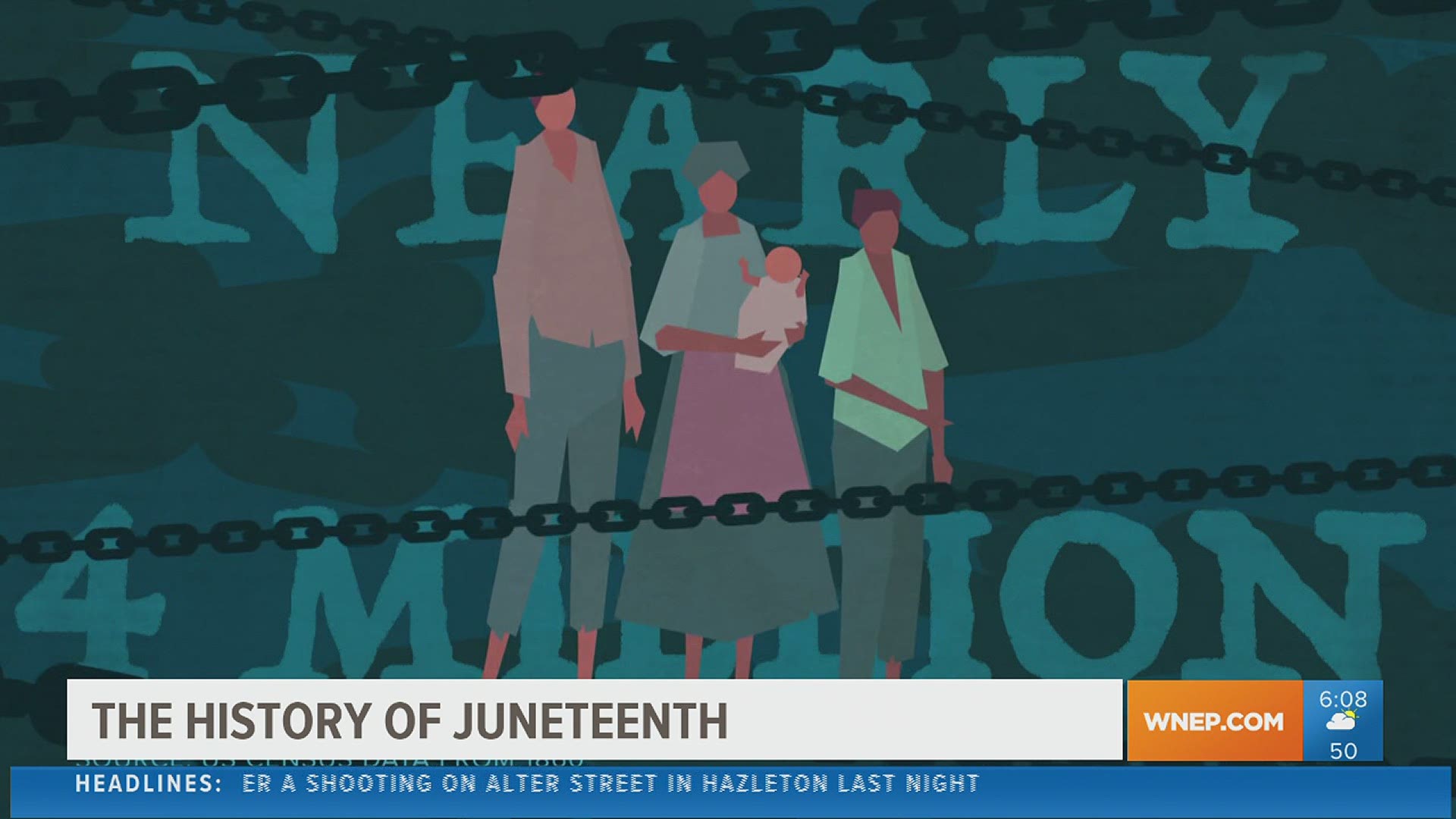WILLIAMSPORT, Pa. — Across the country on Saturday, June 19, many organizations, including in our area, are gearing up to launch Juneteenth events.
One event on tap is in Central PA that Newswatch 16's Ryan Leckey highlighted.
JUNETEENTH Celebration
Saturday, June 19, 10:30 a.m. to 5 p.m.
Brandon Park, Williamsport
Organized by: Lycoming Tri-County NAACP, based in Williamsport, & CommUnity Zone, out of Lewisburg.
What to expect according to the organizers:
"In north-central PA this year, the main focus will be on the community celebration on Saturday, June 19, starting at the cemetery on Freedom Road at 9am. We will pray in for the 10 fallen soldiers who are buried there, who sacrificed their lives to free Black people from chattel slavery. And then we will hold a Peace Walk to Brandon Park. The celebration at Brandon Park starts at 10:30 am with a prayer and the singing of the Black National Anthem followed by greetings from Williamsport Mayor Derek Slaughter. The keynote, culinary historian Adrian Miller, coming in from Colorado, will speak at 11:30 am. The agenda for the rest of the day at the bandshell is full of poems, spoken word, and dancing. It will include Open Mic opportunities to allow the community to showcase homegrown talent. There will also be food trucks, art exhibits, and informational and historical displays. There will even be a pop-up COVID-19 vaccination clinic provided by River Valley Health and Dental between 11 and 3 -- the first 50 people to get vaccinated that day will receive $5 Sheetz gift cards. And of course, the event would not be complete without the opportunity for attendees to register to vote and join the NAACP.
Beyond just the day-of, there will be additional associated activities with the keynote speaker, culinary historian Adrian Miller, earlier in the week. Those will include lunch in Lewisburg and a reception for the event sponsors. Mr. Miller’s books will be featured then as well as on Saturday. The most recent title is “Black Smoke: African Americans and the United States of Barbecue.” The author was also recently featured in episode three of the Netflix docu-series “High on the Hog: How African American Cuisine Transformed America.” Visit www.soulfoodscholar.com to find out more about his work."
Here are several others you shared on Ryan's Facebook Page:
The History behind Juneteeth:
Open a US history book and chances are its author will quickly point out January 1, 1863.
The date President Abraham Lincoln released one proclamation:
"orders and declares" "that all persons held as slaves" "shall be free"
What that same history book might fail to mention, is what happened to these words once they arrived on the shores of Galveston, Texas more than two years after Lincoln wrote them.
Abraham Lincoln’s Emancipation Proclamation is the document that officially ended slavery in 1863, but that is far from the whole story.
In fact, it took years before all slaves were freed in America. Since Southern States had already seceded and the war was underway – the Federal Government had no real power in the Confederacy until the North won the war. It took slaves in Texas two years to learn of their freedom – and that’s why we celebrate Juneteenth.
Here's some history surrounding the beginning of Juneteenth in 1865:
After four bloody years, the Union defeated the Confederacy to win the Civil War and abolish slavery in April 1865.
There were nearly 4 million slaves in the US at that time. (According to US census data from 1860)
Union armies began marching through the southern states freeing thousands of slaves each day.
The news took *months to reach Texas -the westernmost state in the Confederacy.
On June 19th, 1865 – Major General Gordon Granger and 2-thousand Union troops rode into Galveston, Texas and told slaves of their freedom.
“The people of Texas are informed that, in accordance with a proclamation from the Executive of the United States, all slaves are free. This involves an absolute equality of personal rights and rights of property between former masters and slaves…..” ---General Orders, Number 3; Headquarters District of Texas, Galveston, June 19, 1865
Granger’s words spread through Texas – all at once slaves found out the war was over and they were free.
Their joyous, spontaneous celebration gave birth to Juneteenth.
Juneteenth – a combination of the words June and Nineteenth – commemorates when the last enslaved people in the south were finally set free.
Many slaves were met with violence or death when they tried to leave, yet the promise of freedom extinguished fear and fueled generations of indestructible people.
Former slaves gathered on Juneteenth the next year, and the year after that, and over the decades Black communities observe the holiday with festive family gatherings, colorful parades, and bountiful bar-b-ques.
Texas became the first state to make Juneteenth an official holiday in 1980. Since then, 49 states recognize it as a holiday well as the District of Columbia.
While Juneteenth is not a federal holiday in the US, following the summer of protests in the wake of George Floyd’s murder in 2020 - private companies have made Juneteenth a permanent paid holiday for their employees.
Juneteenth is a celebration of independence – the day ALL Americans were truly free.
The Juneteeth Flag - what it stands for:
The Juneteenth flag commemorates the day that slavery ended in the US.
The red white and blue banner with a bursting star in the middle is full of symbols according to the flag’s creator
activist Ben Haith, founder of the National Juneteenth Celebration Foundation.
Let’s start with the colors – of course representing the American flag, and a reminder that slaves and their descendants were and are Americans.
This curve across the width of the flag represents a new horizon: the opportunities and promises that lay ahead for black Americans after freedom.
The white star in the center of the flag has a dual meaning – representing Texas, the Lone Star State. It was in Galveston in 1865 where Union soldiers informed the country's last remaining slaves that the Civil War was over - and they were free. Haith says the star also goes beyond Texas, representing the freedom of African Americans in all 50 states.
The bursting outline around that star is inspired by a nova, or ‘new star’ according to astronomy. This represents a new beginning for all African Americans.



